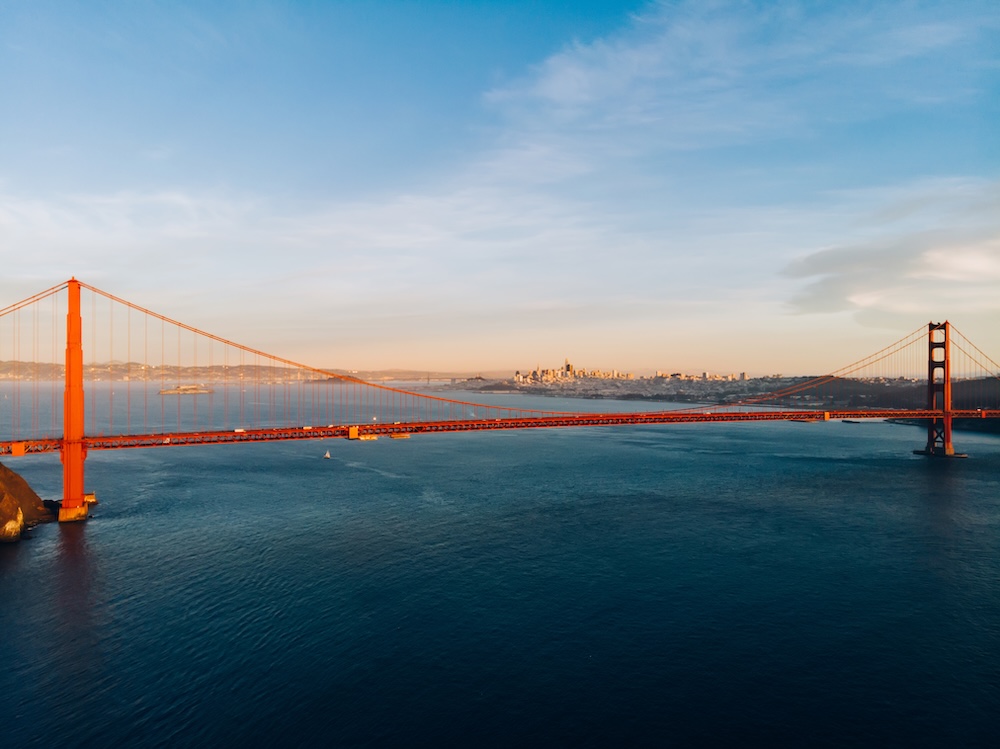Twenty-four whales are dead in and around San Francisco Bay this year alone. At least nine were confirmed ship-strike victims—mostly gray whales—but the real toll may be far higher. In one of the world’s most celebrated coastal cities, the ocean’s largest residents are dying under our watch.
Why San Francisco Bay Is a Hotspot for Whale Deaths
San Francisco Bay is more than a postcard-perfect view; it’s also a major intersection between whales and one of the busiest shipping hubs on the West Coast. Its deep-water channels funnel vessels directly through whale feeding grounds and migration paths, creating a high-stakes collision zone.
The Numbers That Should Alarm Everyone
- 2025: 24 whale deaths in Bay waters, 9 confirmed from ship strikes
- 2015–2025: Dozens more recorded in state and federal databases—many suspected but unconfirmed vessel strikes
- Actual numbers likely much higher due to whales sinking at sea or drifting beyond detection
Gray Whales on the Front Lines
Gray whales migrate thousands of miles between Arctic feeding areas and breeding lagoons in Baja California, passing directly through San Francisco Bay. They often pause here to feed in the shallow waters—unfortunately, right in the path of container ships and oil tankers.
Why Ships Kill So Easily
Speed Is the Silent Killer
Research shows that at speeds above 15 knots, the chance of a whale dying in a collision skyrockets to nearly 80%. Yet in many parts of the Bay, large vessels maintain high speeds to meet tight schedules.
Noise Masks the Danger
The hum of engines and propellers drowns out the sound of an approaching vessel. By the time a whale detects the danger, it may have only seconds to react.
Migration and Feeding Patterns
Whales must surface to breathe, and many feed just below the waterline where krill and small fish concentrate. In shipping lanes, that puts them directly in harm’s way.
Policy Failures Close to Home
Voluntary Speed Limits Are a Toothless Fix
California’s Vessel Speed Reduction (VSR) zones rely on voluntary compliance. While some shipping companies slow down, many don’t—and there are no fines for ignoring the guidelines.
Federal Inaction on Known Risks
NOAA has long known about the collision risks in the Bay, but efforts to expand mandatory protections have stalled. Political pressure from shipping and trade interests continues to outweigh whale conservation.
Technology and Solutions That Work
Slowdowns Save Lives
Reducing vessel speed to 10 knots in high-risk areas can cut fatal strikes by half.
Real-Time Whale Detection
Acoustic buoys, aerial drones, and satellite tracking can warn ships of whale presence, giving them time to slow or alter course.
Lane Shifts During Migration
Temporarily rerouting ships outside peak migration months has proven effective in other regions, including parts of Canada and the East Coast.
Why the Bay’s Whale Deaths Matter Beyond the Numbers
Whales are more than ocean icons—they are climate allies. Each whale stores tons of carbon in its body and boosts phytoplankton growth through nutrient cycling, indirectly supporting oxygen production. Losing them at this scale affects far more than biodiversity—it disrupts ocean health and climate stability.
What Needs to Change Now
- Make 10-knot speed limits mandatory during migration seasons in all Bay Area shipping lanes.
- Install and enforce real-time whale detection systems.
- Publicly rank and penalize noncompliant shipping companies.
- Coordinate state, federal, and port authorities to align on enforceable rules.
Final Thoughts
San Francisco loves to call itself an environmental leader. But allowing its waters to become a whale death corridor is the opposite of leadership. The 24 whales lost this year are not accidents—they are the predictable result of inaction. If we can’t protect the ocean’s largest creatures here, in one of the most progressive cities in the world, what hope do they have elsewhere?









Reader Interactions